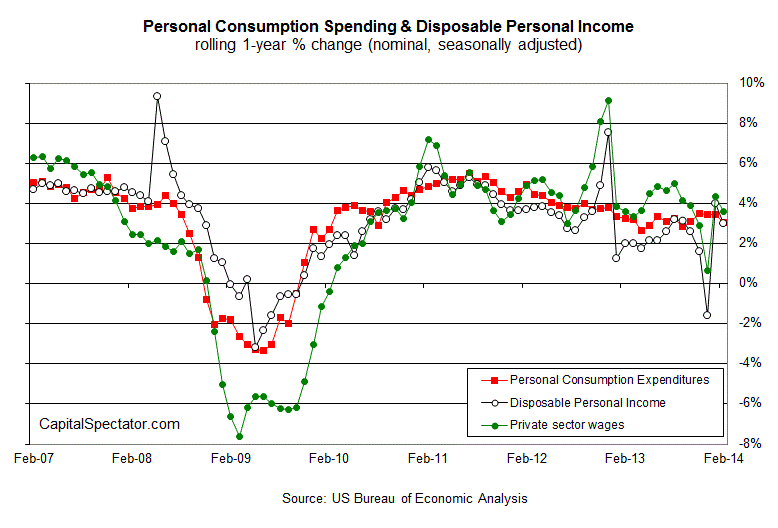Optimism got a break with today’s release for personal income and spending in February. As expected, modest growth prevailed last month as Americans spent a bit more vs. January. The gain marks the second monthly increase in a row. February’s 0.3% rise for both disposable personal income (DPI) and personal consumption expenditures (PCE) isn’t particularly impressive, but the fact that both indicators posted a decent rise in a month that suffered a heavy blow from Old Man Winter is an encouraging sign. More importantly, the year-over-year comparisons remain comfortably above zero, which implies that the recent fears of the worst for the business cycle have been excessive after all.
As you can see in the chart below, the trend for income and spending has remained positive so far this year. That includes a rebound in the rate of growth for private-sector wages—the biggest slice of personal income. The roughly 3% annual advance for PCE through last month is average while DPI’s year-over-year gain for February is above-average, based on the data for the last 12 months (3% vs. 2.2%). In short, today’s numbers offer some comfort for thinking that the economy will continue to expand at a decent clip for the near term.
The argument that a spring thaw awaits for the macro trend certainly carries more weight after reviewing the data du jour, but the upbeat outlook isn’t particularly surprising. A broad review of economic and financial indicators have continued to tell us all along that business cycle risk has been low (see last week’s US Economic Profile update, for instance). It’s been easy to think otherwise, of course, thanks to wobbly data in several indicators over the past month or so. But the limits of cherry-picking the numbers and focusing on monthly comparisons has always been a misleading way to look at the economic news and recent history only reinforces this empirical fact.
